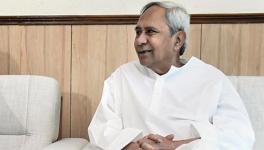Political Silence Over Lynchings is Sanction by Another Means

Over the past four years, parts of India have begun to resemble the lawless south of the United States of the late-19thcentury. Lynch mobs have killed and maimed men and women—in the seeming absence, and failure, of the police—in ways that would shock the sensibilities of perhaps even the most benighted savage. In these years, the governments at the Centre and in the states where the lynchings occurred have turned against the welfare of the society.
In the least, the lynchings are evidence of both governmental depravity, and a demoralised state of society which is being taken back to a time when India was synonymous with medieval barbarity. The silence of the people in power, when mobs thirsted for human blood and then shot, hacked, burned or bludgeoned their victims to death with impunity and visceral disregard for the law, have made them complicit in the despicable acts. They have eyes, but see not; they have ears, but hear not; they have tongues, but speak not. Their silence is sanction.
When lynching is defined as an “extra-legal group assault and/or murder motivated by social control concerns”, the graphic images of police officers leading a UP mob carrying the body of one of its victims after he was beaten black-and-blue reflect that there is, in the nature of the vile and inhuman act itself, the essence of a crime that is more far-reaching, dangerous and deadly. It bespeaks a collapse of the law-and-order machinery and of criminal justice system that is a model of inefficiency.
Ever since Yogi Adityanath, a man whose very rise to power has been scripted by acts of criminality, assumed power in Lucknow, UP has plunged into yet another phase of lawlessness in which the police have been a convenient, if not willing, instrument in extrajudicial killings of alleged criminals who are said to have prospered in the regime of Akhilesh Yadav. We are, of course, familiar with violent mob behaviour in other states such as Gujarat, Rajasthan, Madhya Pradesh and Jharkhand. Each time a Muslim or a Dalit was lynched, the act was invariably recorded on mobile phone cameras and disseminated and distributed across social media, or unrelated videos have been doctored or faked.
More recently in Tripura, the chief executive has proven his imbecility beyond all reasonable doubts, and in Gujarat and Maharashtra, men and women have been killed because of social media-propelled rumours that they are child-lifters. These and other past horrors—killing of Muslims and Dalits—may not reflect a Hobbesian “state of nature” or “all against all”, but they doubtless throw up the twin question – how have we come to this sorry pass and why are mobs on the loose only in BJP-ruled states?
When the first series of killings by so-called gau rakshaksbegan in the name of “protecting the cow-mother”, it was designed to create terror in the hearts and minds of Muslims (who were identified with beef-eating) and Dalits (who were identified as skinners of dead cattle). As the frequency of such barbaric acts went up, the killings served to deepen prejudice and hatred that could then be harnessed to reap electoral benefits. The employment of such barbaric methods is a relatively new phenomenon, in which the prolonged silence of the political party in power is interpreted by a mass of jobless youth as a licence to commit gratuitous acts of violence on people who follow a religious faith different from the perpetrators or are supposedly lowly situated in the caste structure.
The Muslims and Dalits were targeted to turn passive to the violence and bloodshed by which they were—and continue to be—pursued, because directing aggression against such helpless individuals and groups comes with the belief that that they will be unable to retaliate or to persuade government authorities to take severe action on their behalf. On the other hand, the lethal form of delivering death by vigilante mobs served to cause group cohesion, consensus and sanction among the Hindus, irrespective of their social or economic standing. It is as if, in the last four years, lynching and collective violence have been written into the fabric of a Hindu India.
In the context of the lynchings in America’s Deep South in the late years of the 19thcentury and the first three decades of the 20thcentury, historical sociologists attributed the mob killings to “economic threats” as perceived by the majority white communities in those states. Lynchings, the scholars have argued, were more “prevalent when and where whites’ economic power was challenged”. In India today, typically, egregious violence leading to the killing of Muslims and Dalits has occurred mostly in the northern states which suffer from high to moderate levels of unemployment and especially when they found their targets to be relatively better off in private trades such as sale and purchase of cattle and skinning dead animals.
While the causal relationship, if any, between unemployment, which has, by all accounts, gone up in recent years, and lynching is more intuitive than based on solid empirical evidence (for the lack of any sociological study so far), what brings the crimes into sharp relief is the simple question – why have lynchings not occurred in southern Indian states? While the southern Indian states are relatively well placed in terms of employment, the political variable perhaps better explains the prevalence of lynch mobs in the northern states where the BJP is in power.
First, political silence serves to keep the lynchings as localised incidents. By not paying due attention—willing or otherwise—that the ghastly and revolting incidents deserve, the political establishment has sought to maintain deniability – “our men are not involved; these acts are the handiwork of a fringe”. Secondly, the lynchings, while serving to polarise communities, also contribute to diverting people’s mind and attention from other pressing problems resulting from inept and tardy governance. Thirdly, embedded in the practice of lynching are a variety of “symbolic messages”, including terror, for the minority community, with each act of “ritualised violence” representing an attack on an entire minority.
The sheer frequency of the lynchings staggers the mind while the saner elements shudder at the prospects of India relapsing into medieval barbarism. It has been argued that vigilantism and lynch mob murders are an expression of the legally marginalised trying to “communicate their grievances against the inadequacies of the state’s official legal order”. But this does not hold true for India where the lynch mobs belong to the politically empowered majority. And in the face of the rising social criminality, the narrative of official and political silence itself is a message that the Hindu majority is not inclined to protect the minority.
Get the latest reports & analysis with people's perspective on Protests, movements & deep analytical videos, discussions of the current affairs in your Telegram app. Subscribe to NewsClick's Telegram channel & get Real-Time updates on stories, as they get published on our website.
























